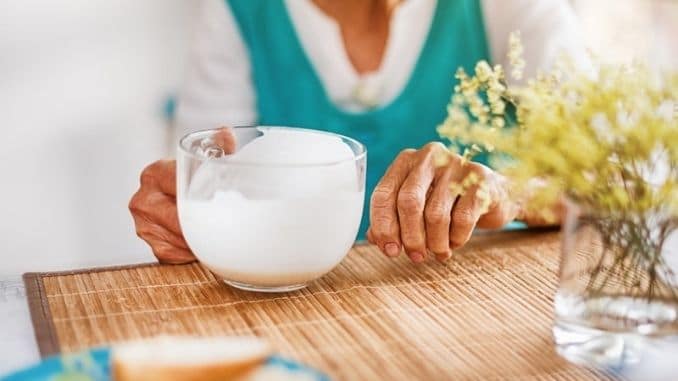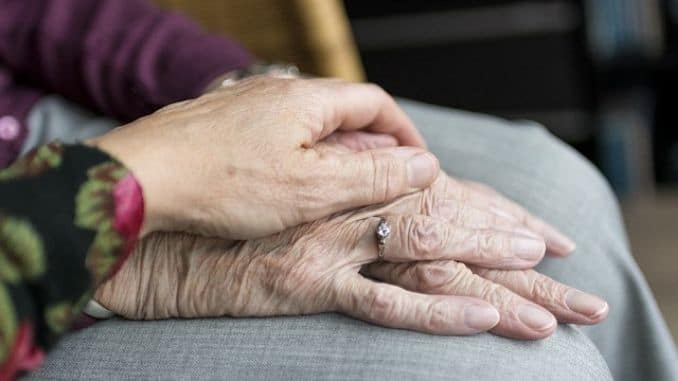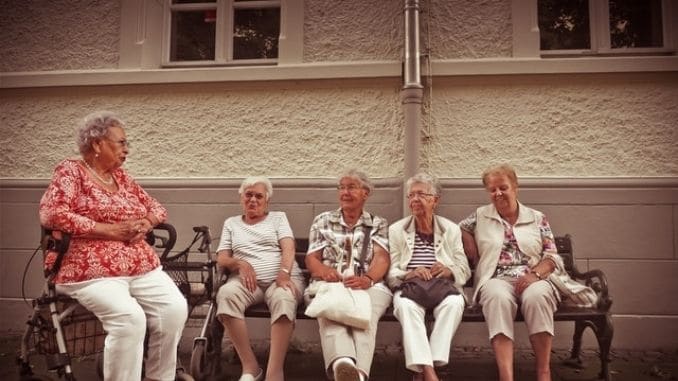
Although nutrition is important at any age, it can become critical after the age of 65. Studies show that the prevalence of malnutrition in the hospitalized elderly can be as high as 32 percent, rising to more than half of newly admitted residents to long-term care facilities.
Malnutrition, when it develops, can cause all sorts of complications, including increased risk of infections, fatigue, loss of strength, depression and more and, once it sets in, it can be challenging to treat.
A large body of evidence indicates that malnutrition is often missed in elderly patients and that doctors and caregivers may be unaware of patients’ nutritional problems.
There are many changes that occur with aging that can affect the body’s ability to gain the nutrients it needs to stay healthy. Fortunately, seniors and caregivers can take steps to increase awareness of nutritional intake and watch for signs of malnutrition that indicate treatment is necessary.
What Is Malnutrition?
Malnutrition occurs when the body doesn’t get enough nutrients from the foods and beverages consumed to work properly. Substances like fats, carbohydrates, vitamins, minerals, and proteins are all necessary for the body to carry out is normal activities like breathing and maintaining a heartbeat.
Malnutrition also refers to nutrient deficiencies, excesses or imbalances in a person’s intake and in general is divided into two categories:
- Undernutrition: This occurs when the person can’t get enough nutrients because he or she isn’t eating enough. This person is typically underweight, at a low weight for his or her height and age and may be experiencing wasting. He or she may be struggling with a disease like heart disease, stroke, diabetes or cancer.
- Overnutrition: This type of malnutrition occurs because the individual is getting too many of certain nutrients and not enough of others. Overweight and obesity typically result and, although the person is eating plenty of food. He or she is likely to be deficient in certain vitamins and minerals.
In the elderly, malnutrition is usually accompanied by weight loss, which contributes to a progressive decline in health. We lose some lean body mass naturally as we age, so losing more due to malnutrition can leave older adults very vulnerable to other health problems. Some of the consequences include:
- Reduced physical function: An inability to go about the normal activities of life
- Reduced cognitive function: Trouble with memory and thinking
- Digestive ailments, including constipation and diarrhea, which can make malnutrition worse
- Eye and vision problems
- Poor wound healing
- Weakened immune system, which increases the risk of infections
- Increased visits to the doctor and higher healthcare costs
- Premature institutionalization
- Decreased quality of life
- Increased risk of mortality
Fortunately, malnutrition is preventable. When the signs are present, all it takes is an individual who is aware of his or her health, an observant caregiver or a wise medical doctor to notice them. Then, screening, assessment, diagnosis, and intervention can take place. Of course, it’s even better to prevent the problem in the first place if possible.
Causes of Malnutrition in the Elderly
As we age, many factors come together to affect nutrient uptake negatively:
- Decreased sense of taste and smell: With age, both of these senses tend to wane, which can make eating less pleasurable.
- Poor oral health and dental problems: Problems with teeth and gums can interfere with eating and drinking and may limit food choices.
- Loss of appetite: Medications, diseases, depression and more can all affect appetite, making food less appealing.
- Dementia: Individuals who have dementia may not remember to eat or maybe confused about preparing and consuming food and drink.
- Depression: The older person has experienced many changes and losses due to retirement, disability and the death of friends and family. These changes can lead to depression, which is a well-known cause of weight loss and malnutrition.
- Monotonous diet: Older adults struggling with food preparation may turn to convenience foods such as cereal, sandwiches and boxed dinners. In time, this practice creates a boring and unvaried diet that can lead to malnutrition.
- Restricted diets: Seniors often follow restricted diets, most of which are intended to help manage certain medical conditions. These diets can lead to poor eating in some cases.
- Poor food choices: Consuming too many high-sugar, high-fat and high-sodium foods can put seniors at risk for nutrient deficiencies.
- Illnesses: The elderly are often dealing with diseases like cardiovascular disease, diabetes, stroke, cancer and more. Moreover, these diseases can suppress appetite, affect digestion and reduce nutrient absorption.
- Medications: Seniors typically take one or more medications, which can interfere with nutrient absorption and affect appetite.
- Poor nutrient absorption: The small intestine is mainly responsible for absorbing nutrients from the foods we eat and moving them into the bloodstream where the rest of the body can use them. Moreover, numerous conditions can interfere with nutrient absorption, including prolonged use of antibiotics, disease, lactose intolerance, radiation therapy, lack of digestive enzymes and certain medications.
- Digestive disorders: When the digestion system isn’t working right, nutrients are not absorbed into the body as they should be. Moreover, many older people struggle with digestive issues, including constipation, diarrhea, stomach ulcers, heartburn, reflux disease, inflammatory bowel disorders, and others.
- Changes in the central feeding drive: Our desire for food comes from a complex system involving neurotransmitters and hormones that can change with age, affecting the “central feeding drive.” As a result, individuals can feel less hungry and fail to eat enough.
- Muscle weakness: A loss of muscle mass, which often occurs with aging, accompanies a decline in muscle strength and function. This affects mobility, potentially making it harder for seniors to shop for and prepare food.
- Socioeconomic status: Many older people are struggling to manage housing and medical expenses. When financial concerns are present, individuals may skip meals or purchase cheap foods that fail to provide the nutrition needed for good health.
10 Signs That a Person Is Suffering From Malnutrition
Currently, awareness of malnutrition or nutrient deficiencies is low. Most people are not aware of how serious the issue can be, and many physicians and nurses receive no training in older adult nutrition. That means that we need to increase awareness of the signs of malnutrition and keep our eyes open for this condition in ourselves and others.
1. Weight Loss
Signs of Malnutrition in the Elderly: This is by far the most common sign of potential malnutrition. Watch for unexpected changes in weight and for other signs of weight loss, such as changes in how clothing fits.
2. Loss of Appetite
Moreover, if a person no longer eats like he or she used to, it’s best to find out why. There may be an illness at work but, either way, this behavior is sure to lead to malnutrition without treatment.
3. Lack of Interest in Cooking
Signs of Malnutrition in the Elderly: Have you noticed that you or a loved one no longer wants to cook food? Are meals becoming bland and lacking nutritional variety? Is there little interest in eating different foods? These may indicate the beginning of malnutrition issues. Be sure to check the refrigerator for old and expired items that are not being used.
4. Weakness
Although a loss of muscle mass often occurs with aging, if the person has become unsteady or unable to perform normal daily activities because of muscle weakness, malnutrition may be to blame.
5. Fatigue or Lack of Energy
Signs of Malnutrition in the Elderly: Seniors typically move a little slower than their younger counterparts, but it is not normal to be tired every day or to lack energy for most of the day. Moreover, these are signs that something is wrong.
6. Poor Wound Healing
Wound healing is typically slower in the elderly than it is in younger people, but if a wound continues to fester or swell for a long period of time, resisting healing, it is likely a sign of malnutrition. Moreover, bruised or dry, cracked skin may be another sign.
7. Irritability
Signs of Malnutrition in the Elderly: Malnutrition affects the brain as well as the body. If you notice unusual behaviors such as mood swings, irritability or apathy, these may be some signs the body and brain are missing the nutrients they need.
8. Difficulty Concentrating
Signs of Malnutrition in the Elderly: Without the proper nutrients, the mind cannot focus and concentrate on a task. Moreover, watch for things like the inability to pay bills, follow a conversation, read a book and so on.
9. Tooth Loss
According to a 2018 study, tooth loss may be associated with malnutrition. The researchers analyzed health records from more than 100 community-dwelling senior citizens and found that more than 25 percent of them had malnutrition or were at risk for it.
They also found that patients with only 10 to 19 teeth were more likely to be at risk for malnutrition. Moreover, they had higher rates of weight loss, ate less and were more likely to suffer from dementia and/or depression and severe illnesses than those with normal nutritional status.
10. Breathing Problems
Signs of Malnutrition in the Elderly: Shortness of breath or other breathing difficulties can be related to lung disease, but they can also mean that the person is not getting enough iron or vitamin B12 in their diet.
What to Do If You Notice Malnutrition
Whether in yourself or someone you care about, malnutrition is a serious condition that requires medical help. Do not try to fix this on your own. Make an appointment with the doctor so he or she can address any contributing factors. These may include changing medications, suspending any diet restrictions or recommending other treatments to improve things like dental problems or severe nutrient deficiencies. Then, try these tips for increasing healthy food intake:
- Sneak in the healthy stuff: Find ways to add in more nutrient-packed foods into the daily diet. Add nut butter to toast and crackers, sprinkle nuts on cereals and yogurt, use more eggs and whole milk, incorporate cheese into soups and noodles and cut-up fruit into cereals, desserts, and snacks.
- Spice it up: If foods are tasting bland, get used to adding more herbs, spices and lemon juice to recipes.
- Plan healthy snacks: Moreover, the elderly often do well eating small meals more often. Stack the cupboards with ingredients to create healthy snacks, including cut-up fruits and vegetables, whole-grain crackers with nut butter or cottage cheese and fruit and vegetables for smoothies.
- Make meals more fun: If depression and isolation are issues, make meals more social events. Go out with friends or invite family members over.
- Consider supplements: Always check with your doctor, but many times supplements can help, including B vitamins, vitamin D, magnesium, potassium, fiber, fish oil, and CoQ10 ― particularly if the person is taking a statin drug.
- Exercise regularly: Moreover, exercise helps stir up an appetite, so try to get in a daily walk or bike ride.
For your guide to the healthiest foods, check out The Best Foods that Rapidly Slim & Heal in 7 Days, here!






